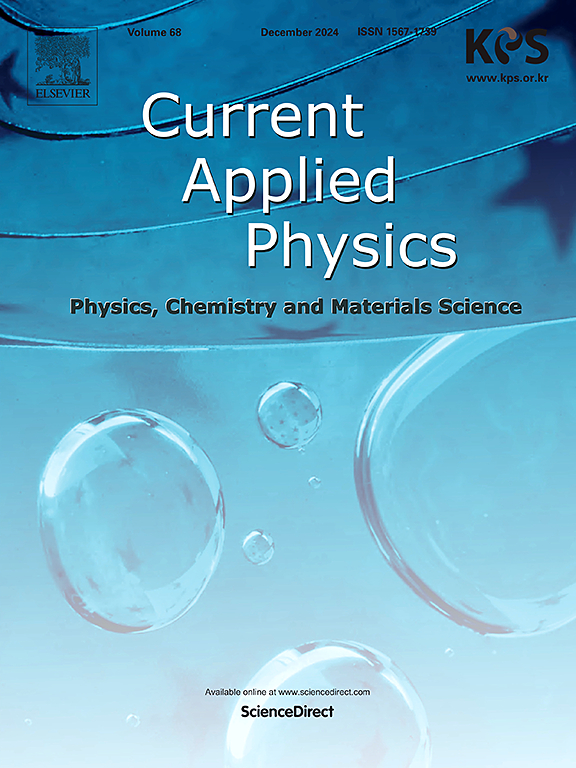利用诱捕光感应选择性晶体形成的化学包裹
IF 3.1
4区 物理与天体物理
Q3 MATERIALS SCIENCE, MULTIDISCIPLINARY
引用次数: 0
摘要
在本研究中,我们展示了基于实验条件,特别是激光捕获和热加热的相同前驱体溶液如何产生不同的产品。在DMSO/DMF溶剂中使用MACl和PbI2的前驱体溶液,我们观察到激光诱捕选择性地诱导MAPbCl3结晶,得到带隙2.94 eV,在440 nm处发射深蓝色的材料。相反,相同溶液的热加热导致MAPbI3薄膜的形成,其特征是在800 nm处发出亮红色。这种现象归因于化学包裹效应,其中溶剂相互作用和热化学条件影响最终产品。通过外部刺激(如激光捕获)控制钙钛矿形成的能力,扩大了针对目标应用微调材料特性的可能性。这项研究不仅加深了我们对杂化钙钛矿结晶动力学的理解,而且为精密材料合成的创新技术铺平了道路。本文章由计算机程序翻译,如有差异,请以英文原文为准。

Chemical wrapping for selective crystal formation using trapping light induction
In this research, we demonstrated how different products emerge from the same precursor solution based on experimental conditions, particularly laser trapping and thermal heating. Using a precursor solution of MACl and PbI2 in a DMSO/DMF solvent, we observed that laser trapping selectively induces MAPbCl3 crystallization, yielding a material with a 2.94 eV bandgap and dark blue emission at 440 nm. In contrast, thermal heating of the same solution leads to the formation of MAPbI3 thin films, characterized by bright red emission at 800 nm. This phenomenon is attributed to chemical wrapping effects, where solvent interactions and thermochemical conditions influence the final product. The ability to control perovskite formation through external stimuli like laser trapping expands the possibilities for fine-tuning material properties for targeted applications. This research not only deepens our understanding of crystallization dynamics in hybrid perovskites but also paves the way for innovative techniques in precision material synthesis.
求助全文
通过发布文献求助,成功后即可免费获取论文全文。
去求助
来源期刊

Current Applied Physics
物理-材料科学:综合
CiteScore
4.80
自引率
0.00%
发文量
213
审稿时长
33 days
期刊介绍:
Current Applied Physics (Curr. Appl. Phys.) is a monthly published international journal covering all the fields of applied science investigating the physics of the advanced materials for future applications.
Other areas covered: Experimental and theoretical aspects of advanced materials and devices dealing with synthesis or structural chemistry, physical and electronic properties, photonics, engineering applications, and uniquely pertinent measurement or analytical techniques.
Current Applied Physics, published since 2001, covers physics, chemistry and materials science, including bio-materials, with their engineering aspects. It is a truly interdisciplinary journal opening a forum for scientists of all related fields, a unique point of the journal discriminating it from other worldwide and/or Pacific Rim applied physics journals.
Regular research papers, letters and review articles with contents meeting the scope of the journal will be considered for publication after peer review.
The Journal is owned by the Korean Physical Society.
 求助内容:
求助内容: 应助结果提醒方式:
应助结果提醒方式:


